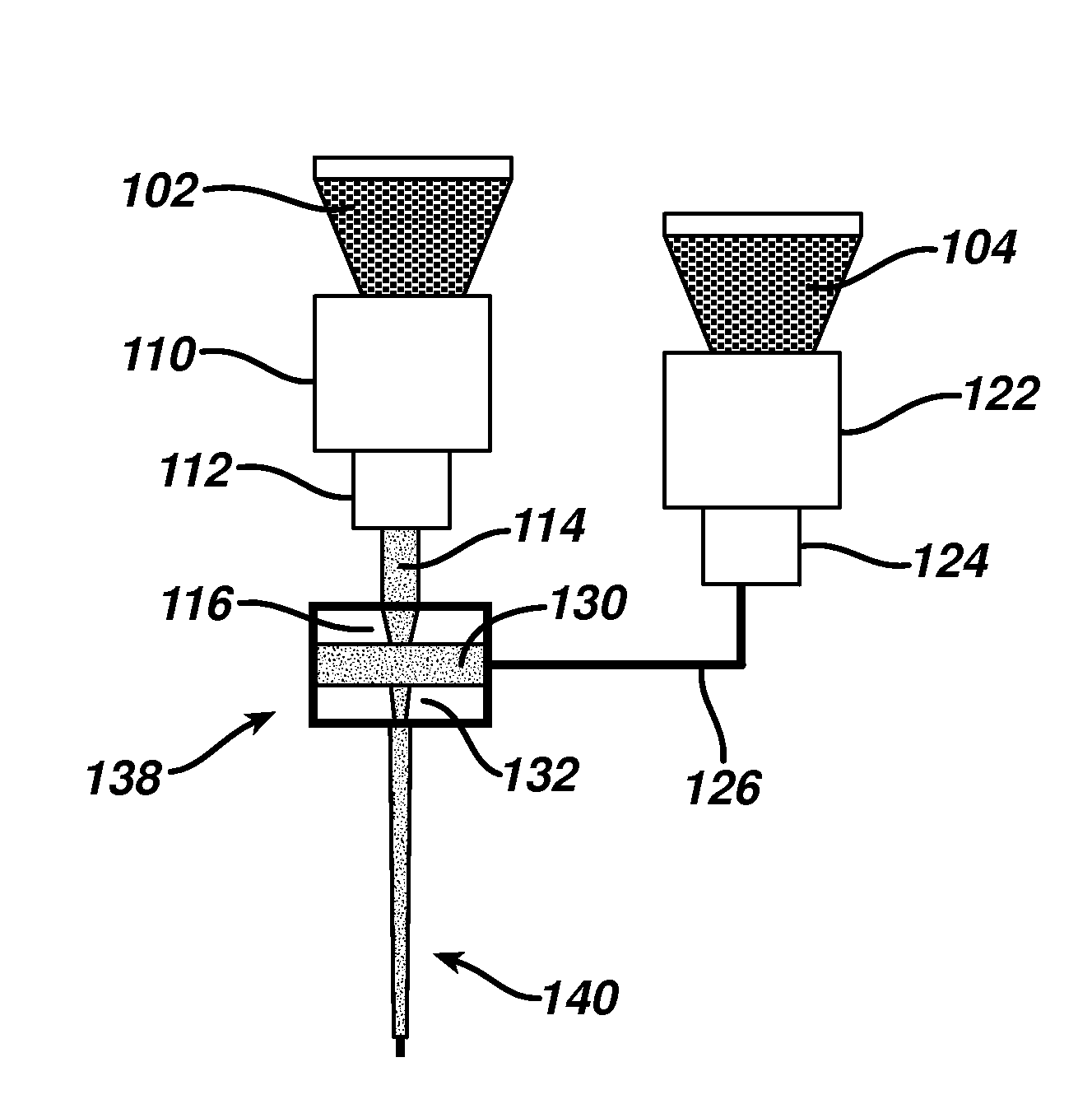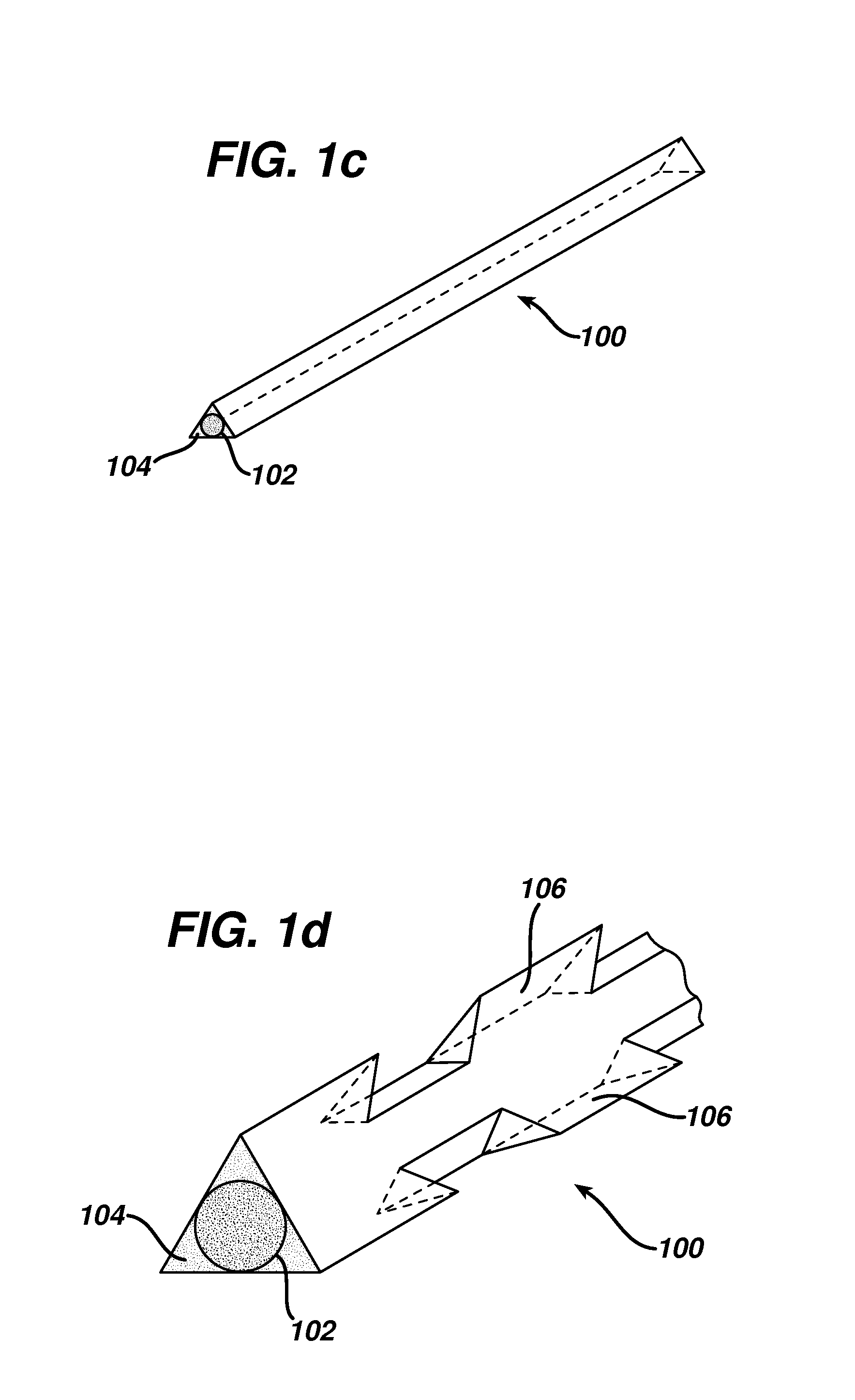Co-extruded tissue grasping monofilament
- Summary
- Abstract
- Description
- Claims
- Application Information
AI Technical Summary
Benefits of technology
Problems solved by technology
Method used
Image
Examples
example 1
[0042]A nonabsorbable tissue grasping monofilament substantially of the configuration shown in FIG. 1b was formed using the coextrusion process shown and described above in connections with FIGS. 1a and 2. Polypropylene (PP) was used as the first component with has an initial modulus of 236 kpsi in the oriented fiber of the homopolymer. Polyethylene terephthalate (PET) with an initial modulus of 2044 kpsi, was used for the second component.
[0043]As shown in FIG. 1a, the first component, PP, was melted in a first extruder 110, where the extruder barrel had three temperature zones maintained, respectively, at 180, 195 and 210° C. The melted polymer stream was metered and pressurized through a gear pump 112 and the pressurized polymer melt stream 114 passed through a circular upper die 116 to form a circular core. The second component (PET) was melted in a second extruder 122 maintained at a constant temperature of 285° C. in all three zones. The melt flow was then metered, and pressur...
example 2
[0046]A substantially identical configuration and process as Example 1, the exception that the second component was a 90 / 10 PGA / PLA random copolymer with an initial modulus of 914 kpsi and an absorption time of 50-70 days. The first component was a 75 / 25 PGA / PCL block copolymer with an initial modulus of 106 kpsi and an absorption time of 91-119 days. The two polymer components were found to have been adequately connected via adhesion at their interfaces. Tissue grasping elements were formed as described above.
PUM
| Property | Measurement | Unit |
|---|---|---|
| Length | aaaaa | aaaaa |
| Size | aaaaa | aaaaa |
| Shape | aaaaa | aaaaa |
Abstract
Description
Claims
Application Information
 Login to View More
Login to View More - R&D
- Intellectual Property
- Life Sciences
- Materials
- Tech Scout
- Unparalleled Data Quality
- Higher Quality Content
- 60% Fewer Hallucinations
Browse by: Latest US Patents, China's latest patents, Technical Efficacy Thesaurus, Application Domain, Technology Topic, Popular Technical Reports.
© 2025 PatSnap. All rights reserved.Legal|Privacy policy|Modern Slavery Act Transparency Statement|Sitemap|About US| Contact US: help@patsnap.com



